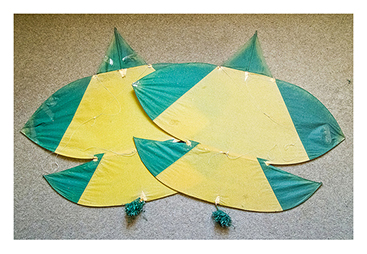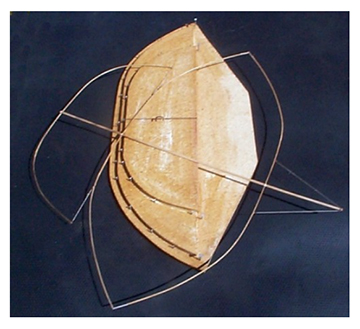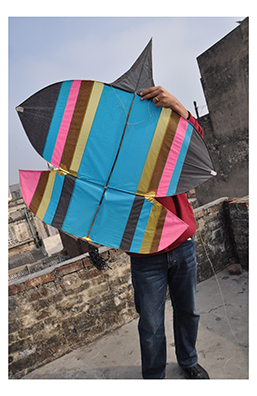The Tukkal - A 'Heavy Duty' Fighter Kite
Kite fighting is done in many countries around the globe. Countries most noted for fighting kites using line cutting techniques to determine a winner are Afghanistan, Bangladesh, India, Nepal, Pakistan in central Asia and the sub-continent, as well as Vietnam, Korea, Thailand in east Asia, and Brazil in South America.
Most fighter kites are light and nimble. They race and dart across the sky in the hands of skilled pilots seeking to catch another fighter kite in a precarious position and cut the flying line of the opponent. There are several varieties of these light and fast fighter kites that are flown in India, Pakistan, Afghanistan, Bangladesh, Nepal, Brazil, Japan, and Korea.
 The name Tukkal means "lantern" because the kite originally was built to lift lanterns into the night sky. These big, flat fighters were designed with lifting a load in mind.
The name Tukkal means "lantern" because the kite originally was built to lift lanterns into the night sky. These big, flat fighters were designed with lifting a load in mind.
The Tukal is perhaps the heaviest of all fighter kites. It is a heavier pulling kite and as such usually requires a heavier flying line to withstand the greater pull that it generates in flight. As such, the Tukal is not typically as nimble as other fighter kites. It is, however, this characteristic that helps the Tukal to prevail in many battles. It's strong pull puts a great deal of tension on the flying line and that helps it to quickly cut through the line of opposing kites in battle. Getting into a cutting position, depends on the skill of the flyer who must compensate for the lack of agility of this kite by being ever vigilant as to its position in the battle.
 Tukkal frame of shaped bamboo. Shown with a plywood form used for shaping the frame. From: Stan Keller, Kite Plan Base. Framed with three heat-shaped bows, a spine and string supports, the Tukal is immediately heavier than the typical fighter kite composed of a spine and a single, slender bow. The sail material is coloured tissue paper which also adorns the lighter faster fighter kites.
Tukkal frame of shaped bamboo. Shown with a plywood form used for shaping the frame. From: Stan Keller, Kite Plan Base. Framed with three heat-shaped bows, a spine and string supports, the Tukal is immediately heavier than the typical fighter kite composed of a spine and a single, slender bow. The sail material is coloured tissue paper which also adorns the lighter faster fighter kites.
A plan for a Tukkal can be found at the Kite Plan Base website. For convenience, a copy from Stan Kellar's plans can be found here.
[Credits: Information research from Stan Keller at Kite Plan Base and Pelham, David. The Penguin Book of Kites.Penguin Books Ltd., Middlesex, England. Page 12.]
 Credit: Photo of Tukkal - by G. Graves from his Flckr collection.
Credit: Photo of Tukkal - by G. Graves from his Flckr collection.





Reader Comments